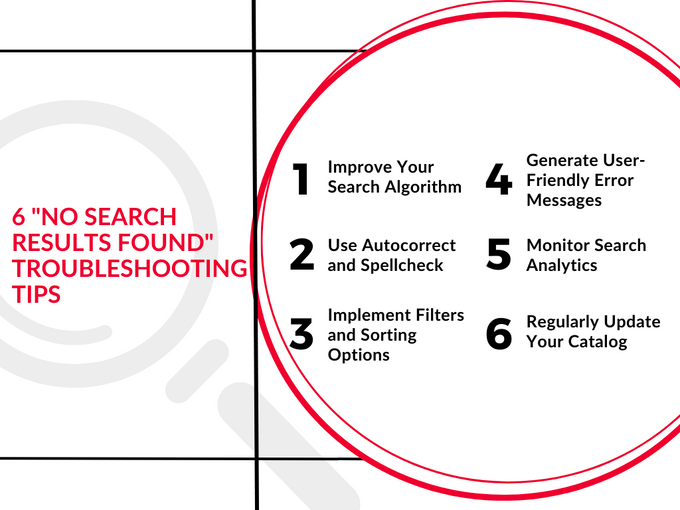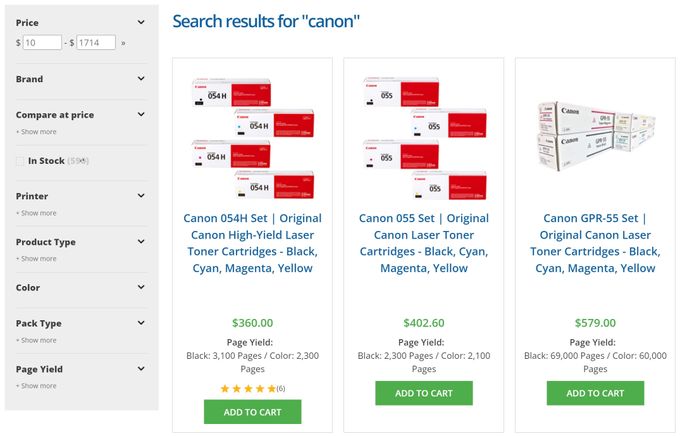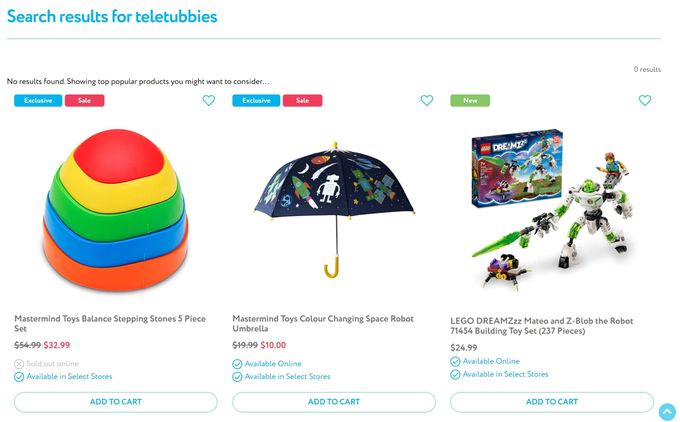No Search Results Found: Troubleshooting Tips for Your eCommerce Site
Learn how to connect your customers with your products as quickly and smoothly as possible.
Updated December 16, 2025

Picture this: a member of your ideal target audience finds your website while shopping. They have a specific product in mind, and they've been searching for a while—they plan to buy it the second they see it. So, they type it into your site search bar, only to be met with "No search results found."
All your hard work has gone to waste as they X out of the browser window and continue their search. In this article, we look at 6 troubleshooting tips to help you strengthen your search game and avoid a "no search results found" scenario.
» Have you tried using search and discovery to boost sales? Here's how to do it.
Understanding the Impact
A "no search results found" message has more implications than simply being annoying to your site visitors. If they're not willing to manually search through your catalog, they may choose to shop somewhere else, resulting in lost sales.
So, this is a good opportunity to positively transform your revenue and your brand. By addressing this issue effectively, you can not only prevent lost sales but also enhance customer satisfaction, both among your current and potential customers.
You can also boost user engagement. This will help to produce increased sales and contribute to the growth of your brand identity and reputation, ensuring long-term prosperity for your company.
» Customers might be leaving your website for other reasons: Find out how to make them stay
Common Causes of No Search Results
Before you start working on a solution, it's important to understand why the dreaded "no search results found" message is popping up in the first place. Here are some potential causes:
- Typos: Customers may make a mistake or spell a term differently than what you've indexed. For example: "saphire ring" instead of "sapphire ring."
- Synonyms: They may search for a synonym or related term different from what you've used. For example, a UK or Australian shopper may type "trainers" when you've used "sneakers."
- Product availability: Your search may show no results when your stock is low, or the item isn't currently listed. For example, a shopper searches for a limited-edition cosmetic set that you're currently out of but will restock soon.
- Indexing issues: If your site's search engine has an incomplete, inefficient, or glitchy indexing function, it could miss potential matches. For example, your search skips certain products or categories.
» Want to give your customers a better experience? Give AI a try.
6 "No Search Results Found" Troubleshooting Tips
1. Improve Your Search Algorithm
Your algorithm is the backbone of your search engine. It dictates how effective your search function will be and how easily shoppers can find what they want.
One strategy to enhance your search algorithm is fuzzy searching, which matches similar terms instead of strictly exact terms. This allows site visitors to see results even with typos, misspellings, or variations. You can also incorporate synonyms and partial matching, which are similar tools to broaden search results.
Satya Jewelry uses fuzzy search to ensure customers see "sapphire" results even if they misspell it as "saphire."
2. Use Autocorrect and Spellcheck
If you do a lot of typing, you know how easy it is for typos and misspellings to slip through. They may even have caused you to lose a few sales or customers. That's why it's a good idea to implement an autocorrect or spellcheck feature into your site search to ensure that users never miss out on a product just because the spelling was off by a letter or two.
» See how natural language search can help maximize your website content.
3. Implement Filters and Sorting Options
When you group and categorize products, your visitors have a much better chance of finding what they're looking for. This is especially true if they don't know exactly what they want but have a general idea based on the broader details.
With filters and sorting options, shoppers can browse and refine their search based on these options, like brand, product type, features, price, and more.
Tonerbuzz has a robust filtering and sorting system, allowing customers to find toner and ink products based on typical filters and more advanced ones like pack type and page yield.
» Avoid these common mistakes when implementing search filters.
4. Generate User-Friendly Error Messages
If a user sees a "no results" page without any accompanying interactive or engaging content, odds are they'll promptly leave the site and continue their search elsewhere. But you might be able to keep them on with messages that offer alternative suggestions, similar products, or other ways to help.
Mastermind Toys' website offers a user-friendly message that directs customers to top-selling products instead of simply telling them that no results were found. This encourages them to stick around and keep shopping.
5. Monitor Search Analytics
As an eCommerce store owner, analytics are one of the most powerful tools you have. They allow you to take a look under the hood and see what's working and what isn't. They also pave the way for strategies you may never have thought of on your own. By looking at your site's search analytics, you might uncover new user behavior insights or search patterns that show how people search on your site or what they're looking for. You can then turn this data into optimizations and improvements that boost your site's performance.
» Did you know? Tweaking your website's homepage can lead to more customer satisfaction.
6. Regularly Update Your Catalog
If your product catalog is outdated, you might be undoing some of the work you put in to grow your store in the first place. Outdated or unavailable products can lead to empty or misleading search results, which can be frustrating at best.
Regularly reviewing, refreshing, and "cleaning out" your catalog helps to make the search process smoother and more seamless.
» Updating your catalog can help improve product discovery in search results
Testing and Iteration
A "set it and forget it" approach doesn't work when running an eCommerce store. It's critical to continuously test and iterate so that you're always on top of changing customer needs and market trends.
- A/B testing is a great way to gather meaningful data on your performance to see which changes are more promising.
- Collecting user feedback is another tried-and-true strategy to better understand your customers and learn about their interests, needs, challenges, and pain points.
Searching for Gold: Turning "No Results" Into Customer Engagement
"No search results found" can be a valuable opportunity to engage your customers and grow your business. In your quest for troubleshooting, test out some of the strategies we've discussed.
As the eCommerce industry continues to evolve, you'll learn firsthand that a robust site search is more of a necessity than a bonus. It's a way to turn visitors into customers, keep them around, and build strong relationships, all while protecting your brand's reputation.
» Give your customers a more personalized shopping experience with custom site search.








